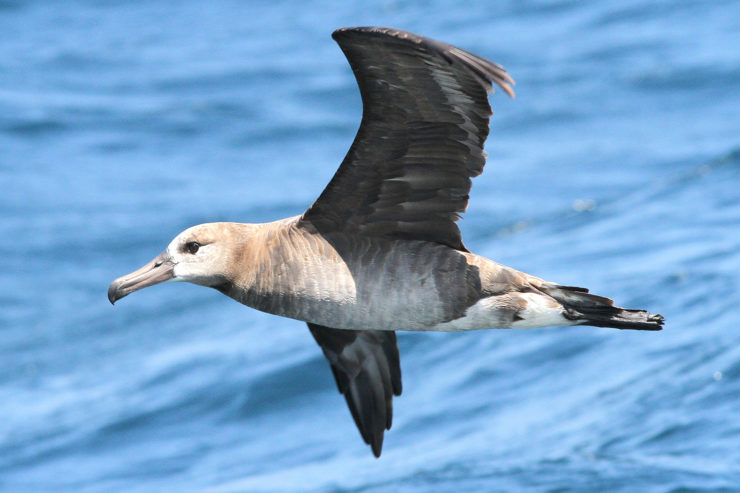Thursday, April 27 from 2-4 pm (Pacific)
- Presented by: Sharon Kramer and Stephanie Schneider of H. T. Harvey & Associates, and Eli Wallach and Arne Jacobson of the Schatz Energy Research Center at Cal Poly Humboldt
- Panelists: Garry George, Director of the Clean Energy Initiative for the National Audubon Society, and David M. Pereksta, Avian Biologist at the Bureau of Ocean Energy Management
In order to determine the potential impacts of offshore wind turbines on seabird species, we need to understand species distribution and behavior in three dimensions – not only where birds have been recorded per longitude and latitude, but how they behave in the air column in response to varying wind conditions. For example, seabirds that typically fly beneath the sweep range of a turbine may have different avoidance behaviors than those for whom the blades are in their preferred flight space. Further, birds respond to the wind speed, and adjust their flight height when the wind is strong (and hence turbines are rotating quickly) versus when the air is calm, so there is a conditional dimension to the analysis as well.
Our 3D seabird interactions study models (a) the abundance of seabirds within rotor swept elevations, and (b) localized offshore wind generation potential. The objective is to identify those areas along the California coast which have a strong generation potential and minimal seabird occurrence.
- Our model inputs begin with historic at-sea observation data from both vessels and aircraft, and long term spatial covariates, for the US West Coast.
- Relationships between wind speeds and seabird flight height are then added to create a 3D map of anticipated seabird density.
- Next, power generation estimates are made using modeled wind resource data generated by the National Renewable Energy Laboratory (NREL) for coastal and offshore areas, along with the expected turbine characteristics for 12 and 15 MW turbines.
- Finally, the performance of various wind farm configurations are compared with seabird abundance using a pareto optimization approach.
In this talk, we will discuss these methods, which we used to model abundance for forty-four seabird species, and how we simulated wind facility power generation. And, we will explore possible tradeoffs between seabird vulnerability and power generation.
Additional resources
- If you’d like to receive emails about our offshore wind research and details on related webinars and presentations, please send us an email at windstudies@schatzcenter.org.
- Learn more about our offshore wind research.
- This research is funded by the California Energy Commission’s EPIC program. Learn more about EPIC.














